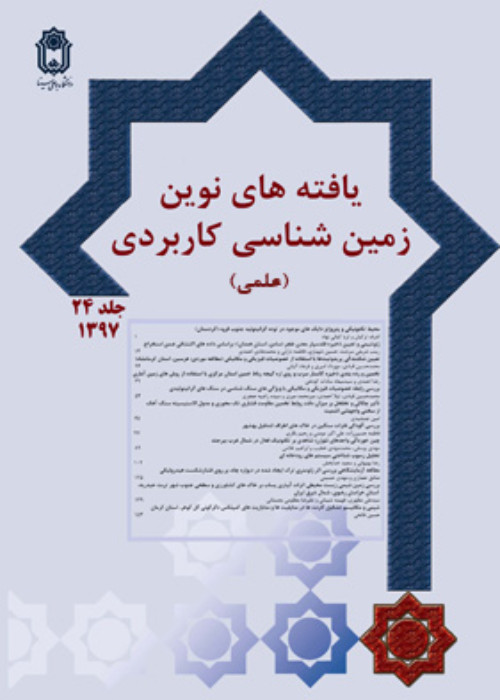Paleopalynology and Palebiogeography of Geirud Formation (Late Devonian) at the Kalariz section, northeast Damqan, Central Alborz
Author(s):
Abstract:
The Geirud Formation at the Kalariz Section, northeast Damqan, comprises of 220 m of alternating basal conglomerate, quartzite, reddish sandstones followed by fossiliferous dark limestone with thin intercalations of shales. It disconformably overlies the Mila Formation and gradually succeeds the Mobarak Formation. Diverse, relatively well preserved palynofloras consisting of 26 species assigned to 13 genera of microphytoplanktons (4 genera and 9 species of Prasinophyte phycomata and 9 genera and 17 species of acritarchs), spores (21 species attributed to14 genera of exclusively trilette spores) and scoleocodonts occur in the material studied. Additionally cryptospores, albeit with far less abundance, are also recorded. Presence of such index fossil forms as: Cymatiosphaera perimembrana, Papulogabata annulata, Tornacia sarjeantii, Unellium lunatum, Unellium piriforme, Deltotosma intonsum, Geminospora lemurata, Densosporites spitsbergensis, Cymbosporites catillus and Punctatisporites planus allows attribution of Late Devonian age (Frasnian - early Famennian) to the pertinent material. Notable absence in the palynofloras studied of Retispora lepidophyta militates against any indication of late Famennian strata being present. Spores recorded from different rock samples are generally similar, denoting an almost uniform complexion unorthodoxically named assemblage zone I herein. Co-occurrence of spores and marine Palynomorphs indicates a marginal marine depositional setting. Spores- parent plants relationships alludes to presence of such diverse components as Progymnospermopsida, Cycadopsida, Zosterophyllopsida, Rhyniopsida, Filicopsida, Lycopsida, Barinopsida, Equisetopsida, close to the depositional site. Presence of Densosporites, Punctatisporites, Geminospora and Cymbosporites coeval testifies to domination of Lycopsida and Filicopsida in the coeval vegetation. Comparison between the palynofloras studied with those coeval host rocks from Iran indicates notable similarity with assemblages from the Alborz and Central Iran, and elswhere with those of the Western Australia. It could be said that Iran and Australia were probably located at comparable latitudes and also that migration routes might had been available between the Alborz and Central Iran at this time.
Keywords:
Language:
Persian
Published:
Journal of New Findings in Applied Geology, Volume:8 Issue: 15, 2014
Page:
43
magiran.com/p1285737
دانلود و مطالعه متن این مقاله با یکی از روشهای زیر امکان پذیر است:
اشتراک شخصی
با عضویت و پرداخت آنلاین حق اشتراک یکساله به مبلغ 1,390,000ريال میتوانید 70 عنوان مطلب دانلود کنید!
اشتراک سازمانی
به کتابخانه دانشگاه یا محل کار خود پیشنهاد کنید تا اشتراک سازمانی این پایگاه را برای دسترسی نامحدود همه کاربران به متن مطالب تهیه نمایند!
توجه!
- حق عضویت دریافتی صرف حمایت از نشریات عضو و نگهداری، تکمیل و توسعه مگیران میشود.
- پرداخت حق اشتراک و دانلود مقالات اجازه بازنشر آن در سایر رسانههای چاپی و دیجیتال را به کاربر نمیدهد.
دسترسی سراسری کاربران دانشگاه پیام نور!
اعضای هیئت علمی و دانشجویان دانشگاه پیام نور در سراسر کشور، در صورت ثبت نام با ایمیل دانشگاهی، تا پایان فروردین ماه 1403 به مقالات سایت دسترسی خواهند داشت!
In order to view content subscription is required
Personal subscription
Subscribe magiran.com for 70 € euros via PayPal and download 70 articles during a year.
Organization subscription
Please contact us to subscribe your university or library for unlimited access!



